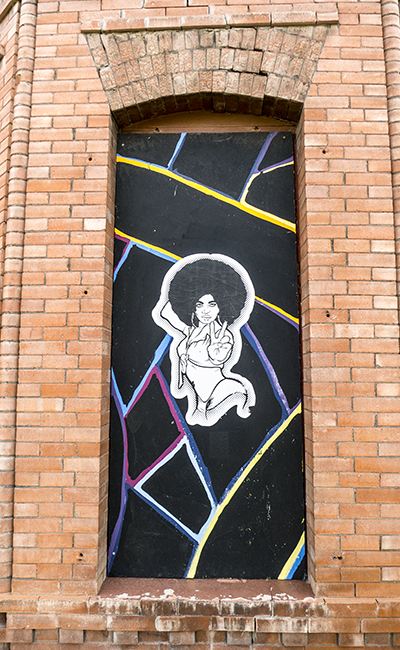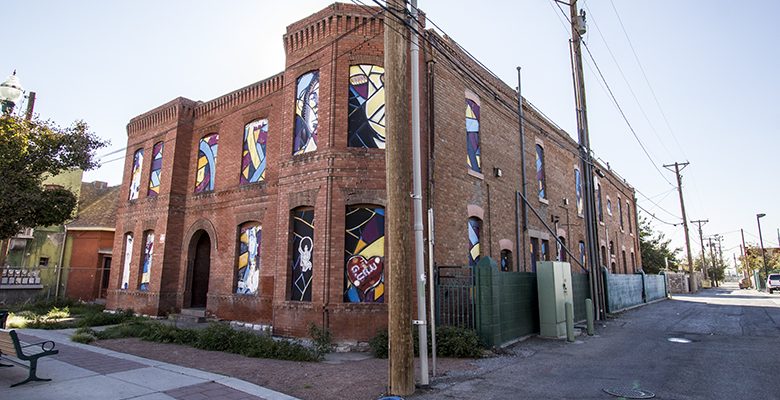Frequent commenter John G. Dungan sent this in to remind us of our history.
The constant push from City Council to revitalize Downtown El Paso seems to have turned into a move to simply tear down the old, and build something new. I suppose that would be okay if the something new was going to either provide shelter for human beings, or in some way be useful all the time for all the people. Unfortunately, we appear to be building more and more structures that only receive part time use by a relatively low percentage of the city’s population.
You’ll forgive me for saying that this makes little sense. On the one hand, it is almost as if they do not realize – or, at least, remember – that downtown El Paso just happens to be where most El Pasoans actually lived before the city got so big! To make things worse, it is as if now Council thinks that downtown just is not worthy of actually being inhabited.
As a reminder of some of our history, I would like to relate part of one historical event from El Paso’s past that is verifiable. I think that I read about this in a book by our own Leon Metz, mostly because his is the only name that comes to mind when thinking about El Paso historians (Although the last name, Mangan, might be involved). To make this a longer story, though, let me begin with a little personal history.
I graduated from El Paso Community College with an Associate Degree in Nursing, in August of 1976. I had been working part time at El Paso’s only Catholic hospital, as a student Nurse, up until that time. As soon as I passed my State Boards, and received my Nursing License, in March of 1977, I moved to what was then a relatively new Sierra Medical Center. I worked on what was called a Medical floor, and most of our patients were non-surgical and/or non-orthopedic. We also took care of people whose surgical procedures had been complicated, raising their risk of infection, and making their care more intense, and prolonged.
In the late spring of 1977, we received a patient from surgery, whose routine gall bladder surgery had proven to be very complicated, and whose chance of recovery was not considered to be very good. This lady, whose name was Nettie Manigold, was at the time about 79 years old. Nettie quickly proved her doctors wrong, and earned the respect and admiration of all who came into contact with her. She was the most compliant patient I ever personally worked with, and she did everything we ever asked her to do, which of course helped her to not only recover, when it had been thought she might not, but to recover rather quickly.
For some strange reason, as she got better and better, she got it fixed in her mind that I had done something extraordinary to “save her life,” when in fact the single most contributing factor in her rapid improvement had to be her single minded purpose in working so hard to do all the things that we, her caregivers, asked of her.
Well, I was getting ready to change jobs about the same time that Nettie came up for her discharge, and we exchanged contact information. From the moment that she left the hospital, and I left that same hospital’s employ, Nettie, and later, her husband, Jesse, became my personal patients. No, no, no. Nothing formal, but since I went into Public Health Nursing, and I was working out of a clinic not too far from where they lived, they started by coming to the clinic once a month or so, to have their blood pressure checked, and to talk about how they were doing healthwise.
I know this may be hard to believe, but El Paso once had a Public Health Department that was formally known as the El Paso City/County Health Department, and the City and the County shared the budget for the operations, which delivered services to the entire county. There were clinics from the Upper Valley, out to Fabens. Plus, of course, different sections of the Department delivered services like Animal Control (that’s right; animal control was under the purview of the Health Department), Vector Control (mosquitoes and various pests), Food Handlers’ classes and cards and inspections of restaurants and businesses involved in food preparation. Out of the neighborhood clinics we provided newborn visits (yes, we actually visited people in their homes), well baby examinations, immunizations (free of charge, if you can believe it), and general educational services about public health.
But, to get back to my story, I began to go visit Nettie and Jessie, in their little home in the heart of Tigua, so as to save them the trips to the clinics where I worked. You see, Jesse had retired in 1950, after working for first, the Police Department, and then, the Fire Department. They owned a very old Chevy, about a 1949 or 50, two door model. They were on a fixed income that was already 27 years old, so obviously, they did not have disposable income.
Their little house? It was located on a plot of land that Jesse had purchased in the depths of the depression. He had built the house himself, as I recall. This was on a short, little street known as West Drive. I think the house is gone now, because nothing looks familiar when I drive by. The house had been built of adobe and, by 1977, was in pretty sad condition.
Well, over time I learned a bit about Jesse’s history, as well as Nettie’s. He was usually not around on my visits, except to get his blood pressure checked, and then he would go off to a back room. But, Nettie told me that he had been one of the first motorcycle cops in El Paso, and that he changed from being a cop to being a fireman because it was considered to be safer work. She did not tell me that he must have been an awesome policeman, but I learned that from the book I mentioned, by Leon Metz.
 At one time, long ago, likely in the 1920’s or 30’s, there was an entire area of town to which certain enterprises were confined. The police allowed prostitution, gambling, and lots of drinking in an area that ran roughly from Chihuahuita, to La Bowie (the original Bowie). Recent reports about tearing down one old building for the new arena reminded me of this particular incident. One of those old buildings was once a house of ill repute, I believe?
At one time, long ago, likely in the 1920’s or 30’s, there was an entire area of town to which certain enterprises were confined. The police allowed prostitution, gambling, and lots of drinking in an area that ran roughly from Chihuahuita, to La Bowie (the original Bowie). Recent reports about tearing down one old building for the new arena reminded me of this particular incident. One of those old buildings was once a house of ill repute, I believe?
Not necessarily at that same location, but somehow I think over closer to South 4th, 5th, or maybe 6th, and likely near Mesa, there occurred an incident in which my friend, Jesse Manigold, figured very prominently. It seems that one of the ladies of the evening betook overmuch of whatever was usually served to the paying customers, and got crazy drunk. She was waving a gun around, threatening all and sundry. The cops moved folks out of the way, and tried to figure out what to do to control the situation. Somebody, perhaps the lady herself, mentioned that “Jess” Manigold was needed because she either liked him, or responded to him in a positive way. So, he was sent for, and in true Western style, he “went in alone,” and persuaded her to give up the gun, and the entire incident ended without harm coming to anyone.
The report of this incident was told in a rather humorous fashion, and Jesse came out of it as the hero that he evidently was. My point is that history of this nature is indeed getting lost, and the quicker those old buildings are torn down, the quicker everyone will have forgotten that El Paso’s past is colorful and exciting. Personally, I find it very sad.
I think that present City Council somehow believes that history is so insignificant, that it can be best ignored and should be thrown out like the baby with the bath water. Tear this down, revitalize downtown, renew, and build things, not for dwellings, but for purposes that will leave large structures mostly empty and unused for most of the time. Downtown is not really for people to live in, you know. It’s like they do not realize that downtown is actually where El Paso’s people used to live.


It’s interesting and completely expected that El Paso would have a Zona de Tolerancia. I’d be interested in some old photos of the bars down there. The abuelas who grew up in Duranguito said that the area used to be full of drunks and junkies. And that’s where the last standing brothel is. I’d like to know more.
Rich, you should check out the Aultman photography collection which is archived here: http://legacy.elpasotexas.gov/lib/border-heritage/index.asp C.L. Sonnichsen’s “Pass of the North” is another great read for local history, and uses many of Aultman’s photos.
John, I agree that it has been sad to see much of our historic buildings destroyed. A version of the story told about Lt. Jess Manigold saving the day when Eva Mercier Johnson wielded her pistols is found in H. Gordon Frost’s “The Gentlemen’s Club”. Should be required reading for anyone involved in El Paso politics and journalism.
The fine people who occupied the Abdou building downtown were (until recently) the model for downtown living. Most lived in that building for 10 years or more and went relatively unnoticed the entire time while creating an incredibly creative living space for little money. They have all moved out due to the building being sold and the rent tripled or quadrupled. That model is now dead and now the only people who will occupy the newer downtown living spaces will probably be mostly boring, homogenized types who live there simply because they can afford it and won’t be doing anything remotely interesting. I’m all for some revitalization but if it’s not all inclusive it just becomes exclusive and boring.
I too am old enough to remember when downtown and central El Paso had some grit and swagger. Much of the history is lost when the buildings disappear and even the ghosts are run out of town.
When I ran the Broadband grant for the city, we supplied the La Fe organization with the best quality graphics computers and equipment. Also, a wonderful instructor who had a degree in filmography. La Fe then gave Segundo students the opportunity to create their own video projects and their creativity was fantastic. I recall that they started to take stories from the older residents of Segundo to document its living history.
Attempts by the city to gentrify these communities for the benefit of a few billionaires disgust me, because these places and people are the living heart of the city. If they really want to help, the city could fix up the streets and lighting like in the Union Plaza district and encourage more street food vendors. Maybe even a margarita truck 🙂